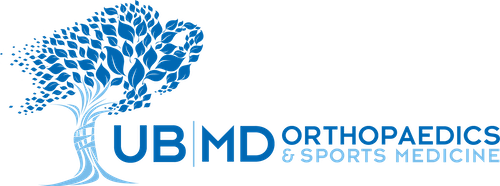Rotator Cuff Repair
Essential to the success of a rotator cuff repair is a balance between restoration of range of motion and protection of the repair. This balance is individual and dependent on quality of the repaired tissue and patient tolerance to rehab.
Immediately post operative
The patient will be immobilized. The shoulder immobilizer will be worn 24 hours daily for 3-4 weeks. During the period of immobilization the patient will work on elbow flexion/extension, pronation/supination and hand exercises. Pendulum exercises will be performed for five minutes 3-5 times daily.
4-6 weeks post operative
Patient is allowed to discontinue immobilizer and will wear a sling for ADLs. Patient will continue with pendulum exercises. Formal physical therapy will begin with emphasis on pain control and passive range of motion.
6 weeks post operative
Patient is allowed to begin active assistive range of motion including pullies and isometric setting exercises for the scapula and glenohumeral joint. This may be started one week earlier or later depending on the size of the tear and tissue integrity.
7 weeks post operative
Resistive exercises begin and are progressed, slowly at first building in intensity over time. The repair and patient complaints will determine the progression. Passive range of motion should be 75% of normal.
12 weeks post operative
Passive motion should be 95% of normal. Active range of motion should be 80% of normal. Aggressive strengthening should be the majority of rehabilitation. Patient should be emphasizing quality motion.
6 months post operative
It is not abnormal to have some complaint of stiffness. Strength should be approaching 90% of normal limits. Patient is able to participate in all normal ADLs. Discuss return to athletics and heavy labor with your physician.
6-12 months post operative
Progressive return to full activities.
